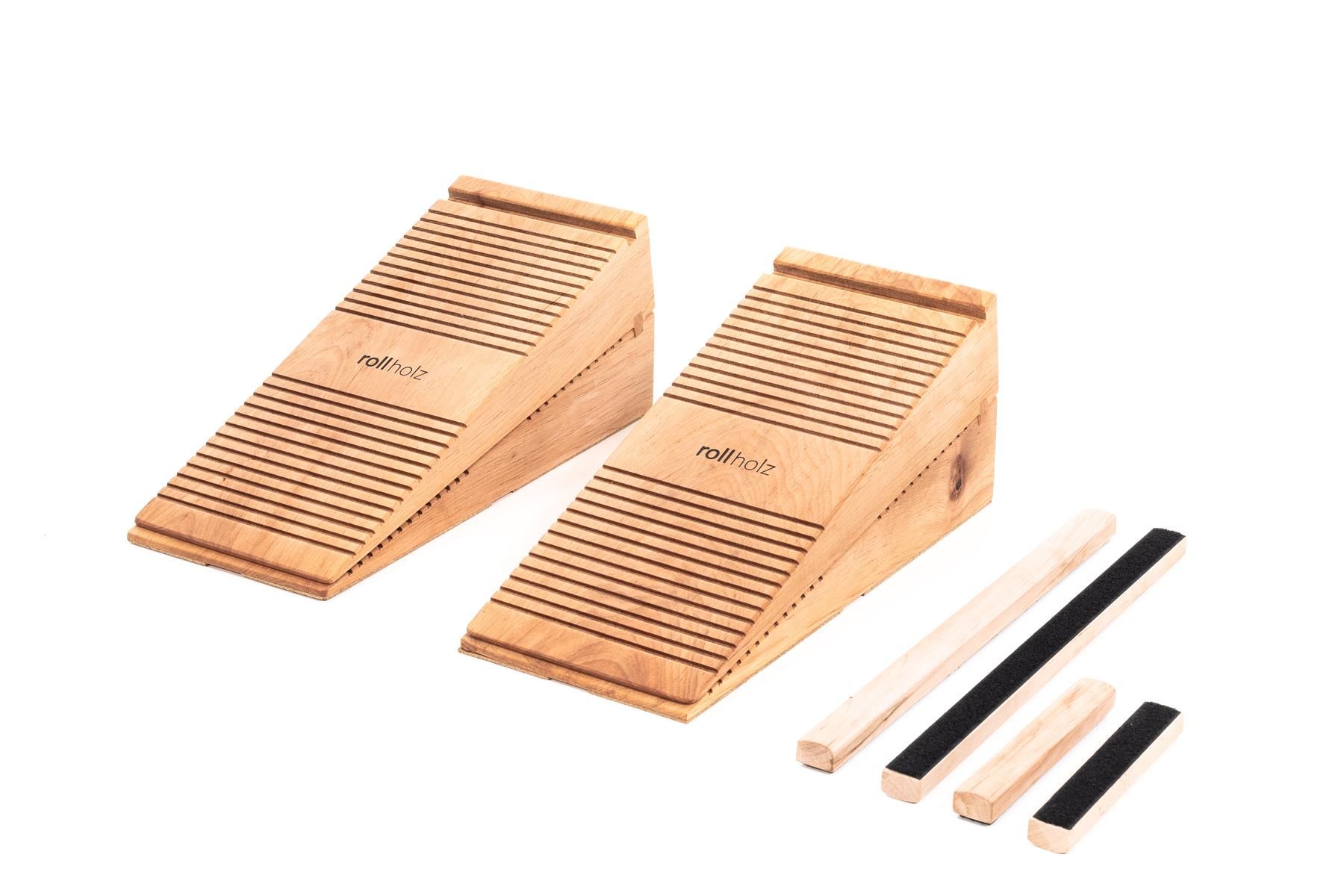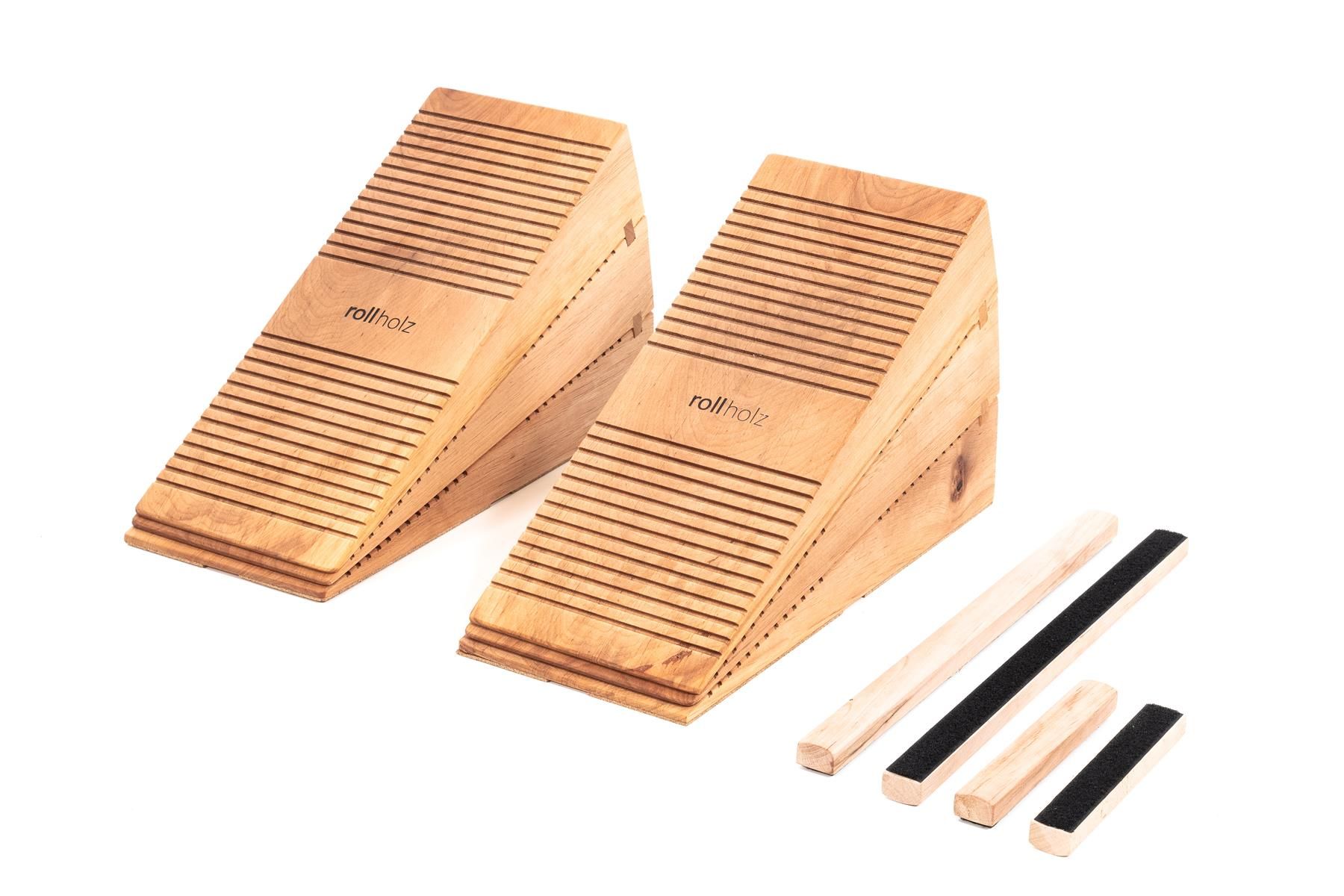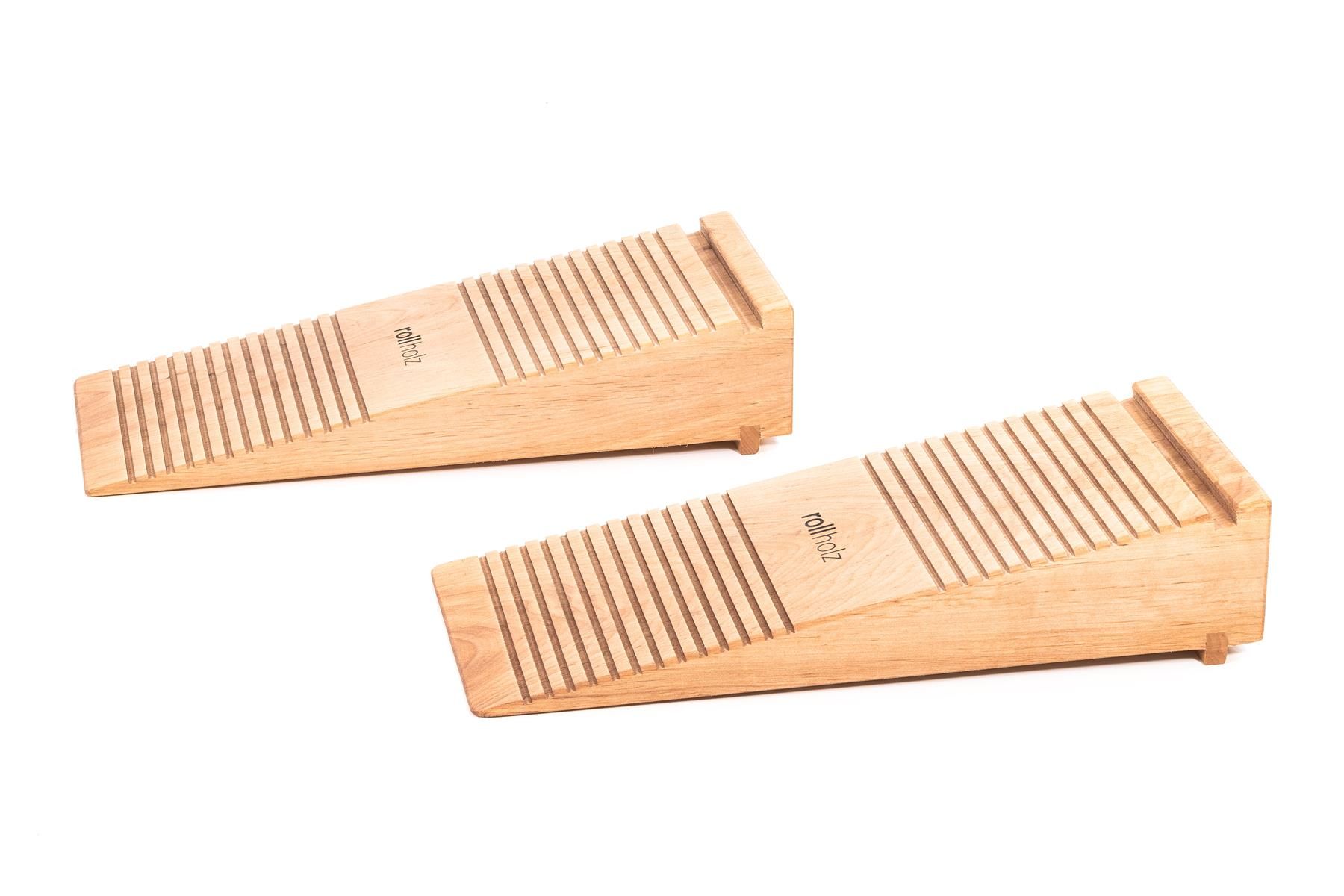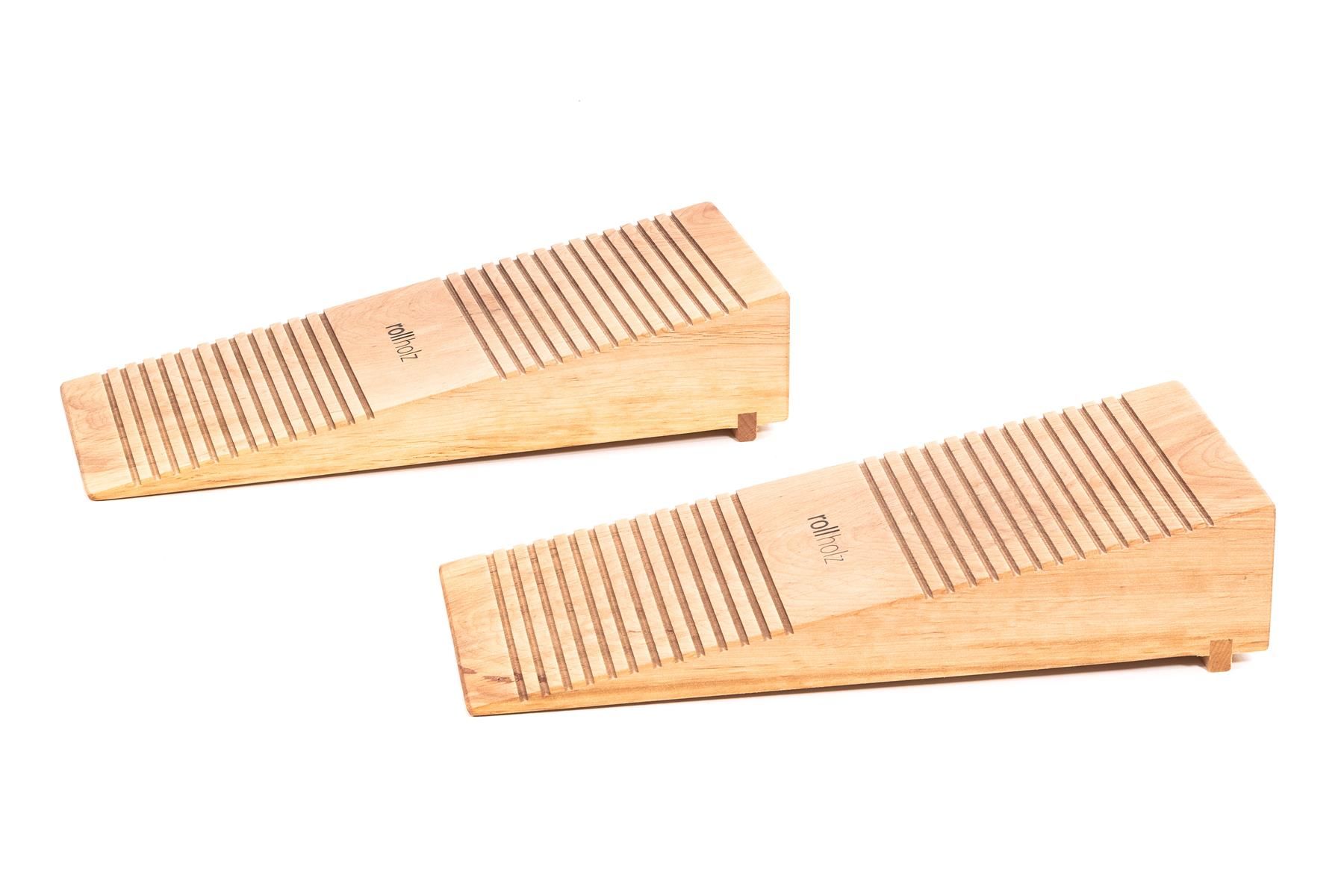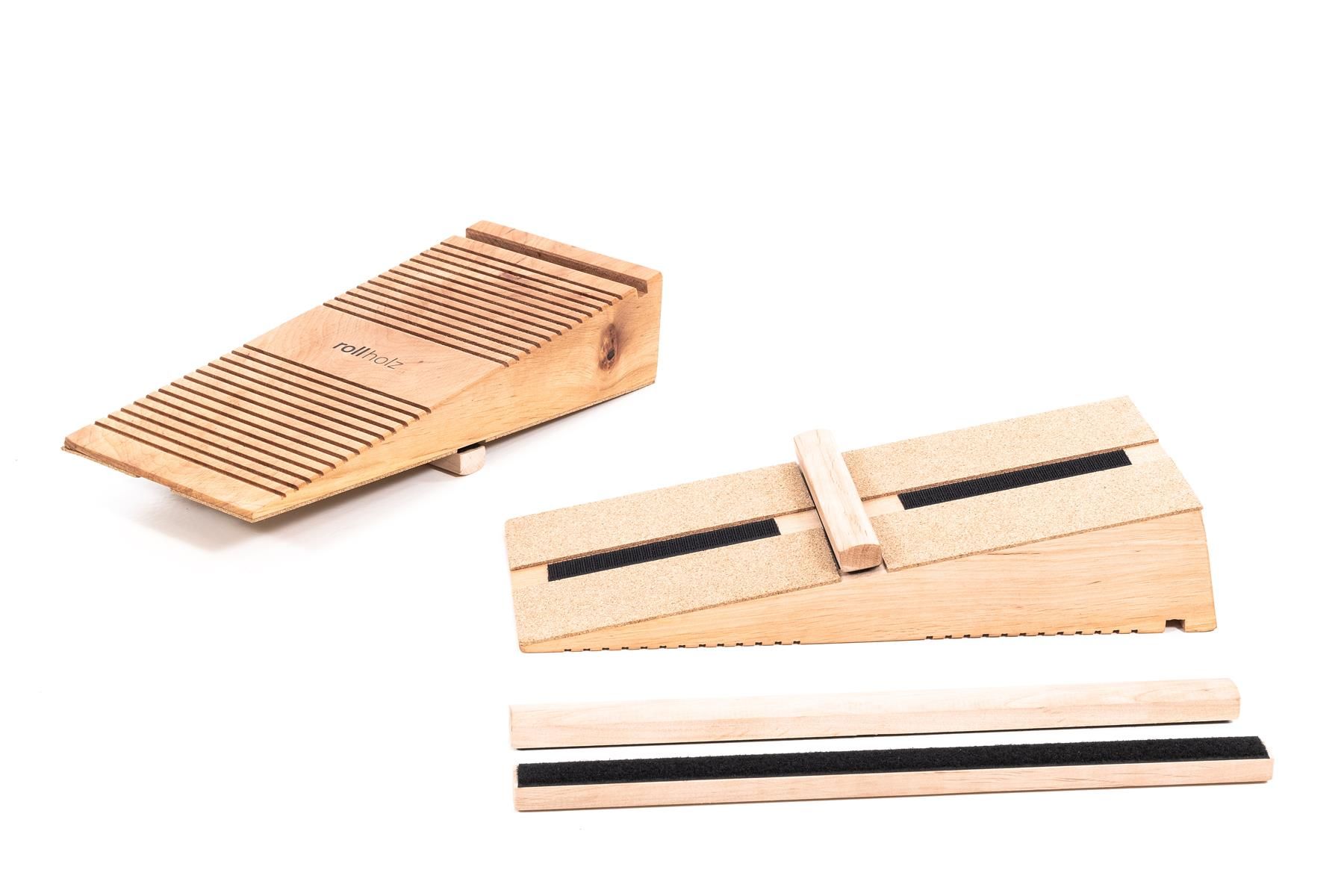rollholz: roll yourself fit!
rollholz Balance Wedges - Stretching | Mobilization | Strengthening
10° - 20° - 30°
· Heel elevation for squats
· Stretching
of the calf muscles
· Mobilization of the ankle joint
· Instability in longitudinal and transverse axes
possible
· Non-slip cork
bottom
· Non-slip top
· Made in Freiburg
·
10-year warranty
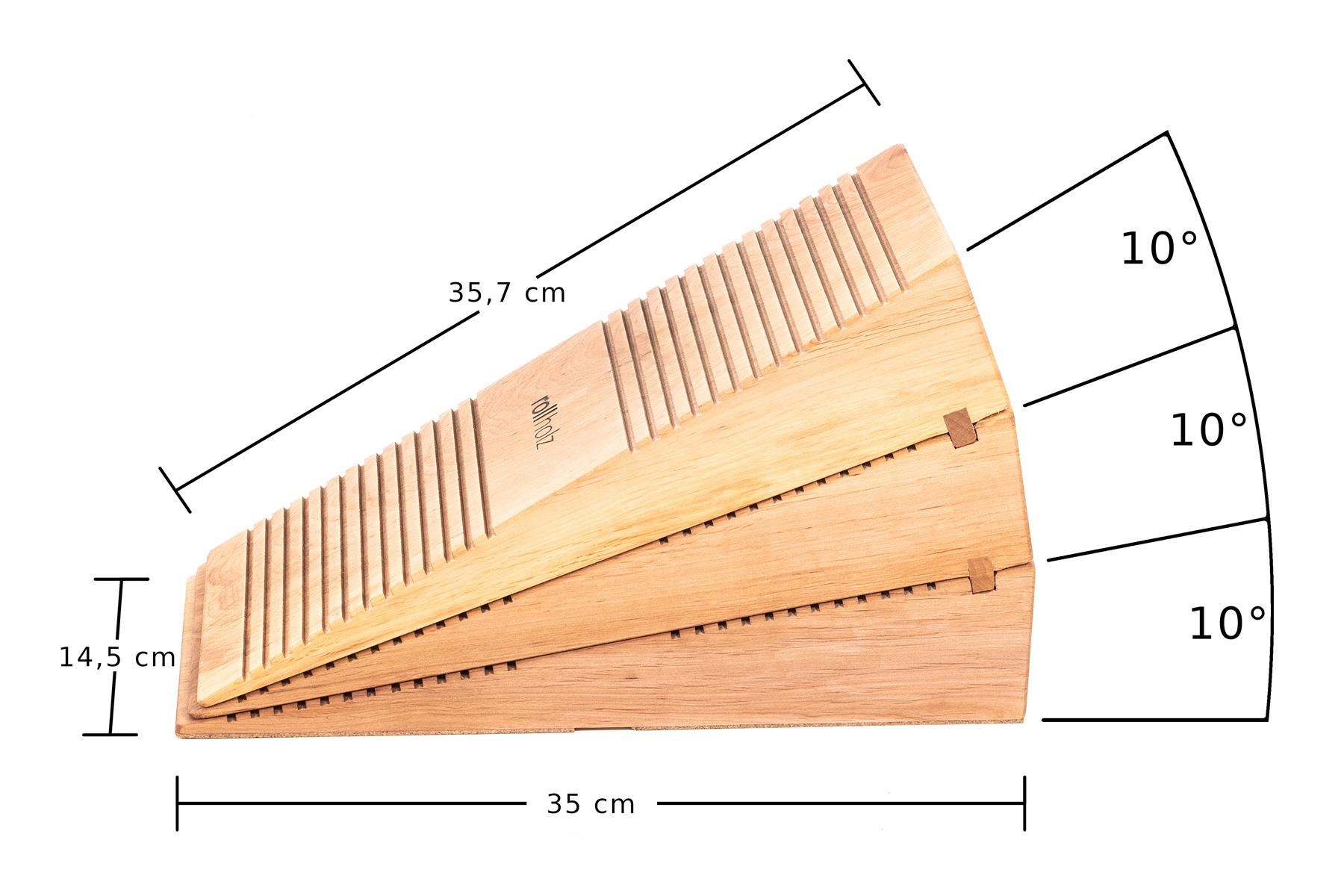

Improves Ankle Mobility - Squats
By elevating the heel during a squat, the wedges provide more range of motion in the ankle joint, allowing the knees to bend more without the heels lifting off the ground. It’s worth mentioning that for a long time, it was considered undesirable to let the knees extend past the toes during squats. The "Knees Over Toes Guy" has done much to educate on this. For healthy knee joints, it's important to fully utilize the knee joint’s function and achieve as much flexion as possible.
Since most people's ankle joints are not flexible enough during dorsiflexion, heel elevation reduces the need for dorsiflexion. When performing a squat, mobility is "given" since the ankle no longer limits movement.
The steeper the wedges, the greater the range of motion generated in the ankle joint. Following the motto "from heavy to light," it makes sense to start with a steeper position and gradually work towards a flatter position depending on the ankle's existing mobility. Since ankle mobility should also be improved, the motto for heel elevation is: as much as necessary, as little as possible.


Calf Stretching
The wedges are an excellent choice for effectively stretching the calf muscles. Calf muscles can become tense due to lack of movement, improper footwear, or foot deformities (such as flat feet). By applying stretch to the Achilles tendon and calf, repeated use can reduce baseline tension in the posterior chain, helping to prevent conditions like heel spurs.
Teaches the Hip Hinge
The wooden wedges can also be used to elevate the front part of the foot. When the forefoot is elevated, it helps beginners make a predominantly hip-driven flexion, known as a "deadlift." Often, beginners push their knees forward, mixing squat and deadlift mechanics. Here, the wedges can help learn a hip-focused movement pattern, like that used in deadlifts.


Mobilizing the Ankle Joint
Mobility in the ankle joint can also be improved through training. Particularly, dorsiflexion is often restricted in many people. The wedges can counteract this. In a lunge, for example, the front foot can be placed with the ball on the wedge. The front knee is then pushed as far forward as possible until maximum flexion in the ankle joint is achieved. This position can be held for about 30 seconds, and after a short break, this can be repeated five times.
Stabilizing the Ankle Joint
With the Velcro attachable rails in the longitudinal or transverse axis, intensive stability training can be performed for the ankle joint. This can be done unilaterally on one wedge or bilaterally on two wedges with additional weight. This training enhances muscular stabilization of the ankle joint, making it better able to prevent injuries such as ankle sprains.
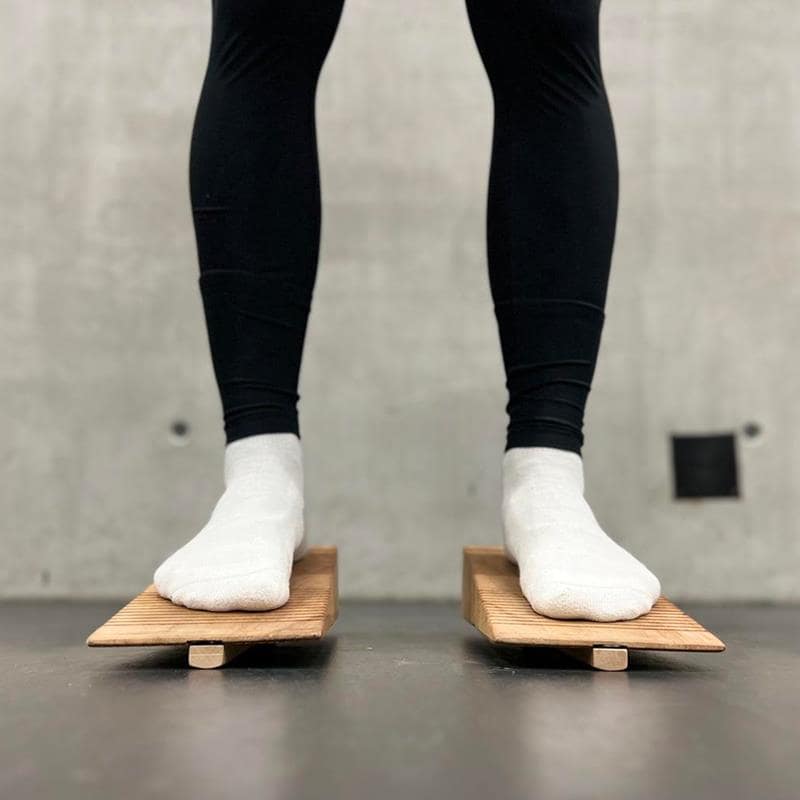
| Oil used | Linseed oil |
|---|---|
| Ebook included | No |
 Deutschland
Deutschland 

